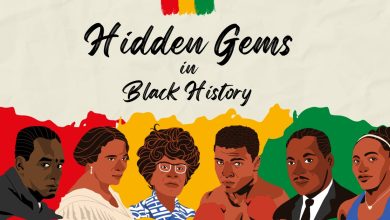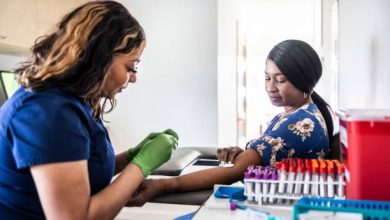Why Are Black Cancer Patients Frailer Than Their Peers?


Older Black American cancer patients have higher rates of frailty and disability than their white peers, which may help explain why Black patients also have higher cancer death rates, new research suggests.
The researchers noted that Black patients are more likely to die from cancer than most other groups, despite efforts to reduce cancer-related racial disparities.
Black cancer patients often fare worse in multiple ways
The new study included 553 older adults who had recently been diagnosed with gastrointestinal cancer and were listed in a registry at the University of Alabama at Birmingham.
The researchers found that 50 percent of Black patients and nearly 33 percent of white patients were frail, with symptoms such as weakness and fatigue.
The study also found that Black patients were twice as likely as white patients to report difficulties with: walking one block; basic daily self-care tasks like dressing and bathing; and daily household chores such as cleaning and shopping.
The differences between Black and white patients remained even after the researchers adjusted for age, sex, education, cancer type, cancer stage and other health conditions, according to the study published in the journal Cancer.
“As frailty and functional impairments are associated with increased chemotherapy toxicities, hospitalizations and poorer overall survival, these differences may in part explain racial disparities in cancer outcomes,” lead study author Dr. Grant Williams said in a journal news release.
RELATED: Experts Outline Health Guidelines for Cancer Survivors
Identifying frailty
According to Johns Hopkins, you are considered frail if:
- You’re shrinking. You’ve unintentionally lost 10 or more pounds in the past year.
- You feel weak. You have trouble standing without assistance or have reduced grip strength.
- You feel exhausted. Everything you do takes a big effort, or you just can’t get going for three or more days most weeks.
- Your activity level is low. This includes formal exercise plus household chores and activities you do for fun.
- You walk slowly. Your pace is considered slow if the time it takes you more than six or seven seconds to walk 15 feet.
Can frailty be reduced?
Further research is needed to determine why frailty is more common in older Black cancer patients and to find ways to reduce it, the study authors said.
“Health care providers should work to incorporate geriatric assessment-driven interventions into clinical practice for older, frail patients — including those who appear to be at ostensibly higher risk because of racial considerations — with the goal of lessening these patients’ side effects and improving their cancer outcomes,” Jana Wieland and colleagues wrote in an accompanying editorial.
Although more work needs to be done to determine ways to successfully reduce frailty, you can talk with your doctor in the meantime. Research shows that lifestyle changes can help and your doctor may be able to help you come up with solutions.
One way you can do this is by being active. “One cause of frailty is the age-related loss of muscle mass,” Samuel Durso, M.D. says. Research shows that activities like walking and easy strength-training moves improve strength and reduce weakness – even in very old, frail adults. Every little bit can help adults at any age.
RELATED: Could a High-Fiber Diet Help Boost Cancer Survival?
Another way to reduce frailty is by eating healthy. You should aim for three healthy meals a day that consists of fruit, vegetables, protein, good fats, whole grains and low-fat dairy products. This approach is known as the Mediterranean diet and one study shows that if you follow it faithfully, you are 74 percent less likely to become frail. You should also include muscle-nurturing protein in your diet. Women need about 46 grams per day and men need about 56 grams. However, many older people don’t get quite enough.
Good sources of grams include:
- Low-fat milk (8 grams per 8 ounces)
- Meat, fish or poultry (about 21 grams in 3 ounces)
- Cooked dried beans (about 16 grams in a cup)
- Yogurt (11 grams in 8 ounces of regular yogurt, 23 grams in 8 ounces of Greek yogurt)




